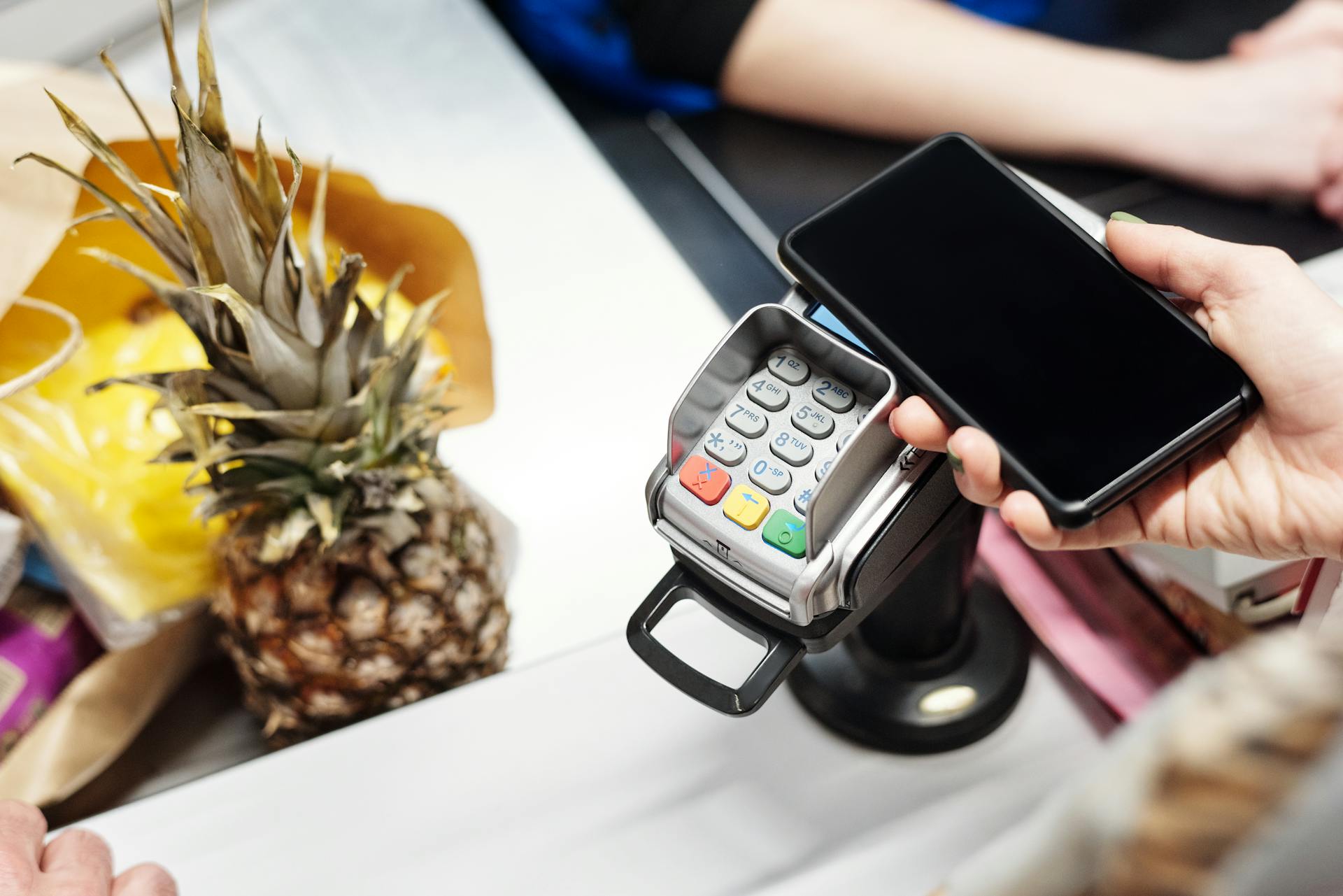
The Single Euro Payments Area (SEPA) has made European payments a whole lot simpler. It's a single market for euro payments, allowing people to make and receive payments in euros across the Eurozone countries.
With SEPA, you can send and receive payments in euros to and from any bank account in the Eurozone, just like you would within your own country. This is a huge improvement over the old system, where international transactions often came with hefty fees and long processing times.
One of the biggest benefits of SEPA is that it's designed to be more efficient and cost-effective than traditional payment systems. This means that businesses and individuals can save money on transaction fees and enjoy faster payment processing times.
Suggestion: Currency Replaced by Euros in Latvia
What Is the Single Euro Payments Area?
The Single Euro Payments Area (SEPA) is a system of transactions created by the European Union (EU). It harmonizes the way cashless payments are transacted between euro countries.
SEPA makes it possible for people doing business in these countries to make cashless payments across borders with the same cost and convenience of domestic payments. This is a big deal, as it eliminates the need for extra fees and charges when making payments across borders.
The SEPA architecture is used by European consumers, businesses, and government agents who make payments by direct debit, instant card transfer, and credit transfers. It's designed to make international payments as easy and convenient as domestic payments.
The SEPA is approved and regulated by the European Payment Council (EPC). They oversee the operation of the SEPA and ensure that it runs smoothly and efficiently.
The SEPA has been fully implemented for credit and debit payments since 2014. This means that people can now make payments across borders without worrying about extra fees or charges.
Here are some key features of the SEPA:
- Direct debit: enables businesses and organizations to collect payments directly from customers' bank accounts.
- Instant card transfer: allows for fast and secure payments using debit or credit cards.
- Credit transfers: enables individuals and businesses to send and receive payments using their bank accounts.
Key Features and Benefits
SEPA payments offer several key features that make them efficient and convenient. Regular SEPA bank transfers take just one business day to reach the beneficiary.
Broaden your view: Sepa Bank Transfer
One of the main benefits of SEPA is its cost-efficiency, with fees usually lower than for other international transfer options. The fees for receiving and sending money are the same for domestic and cross-border payments within the SEPA area.
SEPA uses IBANs and SWIFT codes to standardize the transaction process, ensuring that the money reaches the right beneficiary.
Goals
The main goal of SEPA was to improve the efficiency of cross-border payments. This was stated in 2008, with the aim of turning fragmented national markets for euro payments into a single domestic one.
SEPA was designed to enable customers to make cashless euro payments to any account located anywhere in the eurozone, using a single bank account and a single set of payment instruments. This would make it easier for people to receive salaries and make payments across the eurozone.
The project aimed to reduce the overall cost to the European economy of moving capital around the region by up to 2-3% of total GDP. This was estimated to be a significant reduction, highlighting the potential benefits of a unified payment system.
SEPA specifically focuses on payments in the euro currency, and does not cover payments in other currencies. This means that domestic payments in non-eurozone countries will continue to use local schemes.
You might like: Single Dresser
Key Features and Benefits
The Single Euro Payments Area (SEPA) has revolutionized the way we make cross-border payments. SEPA payments can be made to any account in the eurozone using a single bank account and a single set of payment instruments.
Regular SEPA bank transfers take just one business day to reach the beneficiary, while SEPA Instant Credit Transfers allow you to send funds within seconds, 24/7. This is a significant improvement over traditional international transfer options.
SEPA bank transfers are likely your best bet if you need cross-border euro payments, as financial institutions charge the same fees for domestic and cross-border payments. These fees are generally lower than those for non-SEPA international payments.
SEPA uses IBANs and SWIFT codes to standardize the transaction process, ensuring that the money reaches the right beneficiary. This uniformity is a key feature of SEPA payments.
Here are some of the key benefits of SEPA payments:
- Cost-efficiency: Fees are usually lower than for other international transfer options.
- Fast and efficient: Regular SEPA bank transfers take just one business day to reach the beneficiary.
- Reduced costs: Financial institutions charge the same fees for domestic and cross-border payments.
- Uniformity and security: SEPA uses IBANs and SWIFT codes to standardize the transaction process.
- Enhanced security: SEPA bank transfers are heavily regulated to enhance the security and reliability of cross-border and domestic transfers.
Payment Schemes and Methods
SEPA offers various payment schemes, including SEPA Credit Transfer, SEPA Instant Credit Transfer, and SEPA Direct Debit.
SEPA Credit Transfer is the most common type of SEPA payment, with over 20 billion payments made every year. It allows for transfers to individuals and businesses and typically takes one business day to process.
To initiate a SEPA Credit Transfer, you'll need the beneficiary's full name, IBAN, and SWIFT code. This type of transfer is best suited for non-urgent, regular payments such as one-off transfers, salary payments, or inter-company transactions.
SEPA Instant Credit Transfer is similar to a regular SEPA transfer but offers faster processing times, reaching the beneficiary in less than ten seconds. It also has a default scheme maximum amount per transfer of 100,000 euros and is available 24/7.
SEPA Direct Debit allows businesses to collect money directly from a person's bank account if the person has agreed to it beforehand. This type of payment is mainly used for recurring payments by companies that provide services monthly, quarterly, or yearly.
There are two types of SEPA Direct Debit schemes: SDD Core and SDD B2B. SDD Core is available for consumers and businesses and allows refunds, while SDD B2B is available for payments between businesses and doesn't allow refunds.
You might enjoy: Credit One Platinum Card
The SEPA payment process involves selecting the payment scheme, choosing the bank account, and filling out the beneficiary's details. The process will be similar if you have a bank account with other payment service providers.
Here are the main differences between SEPA Credit Transfer and SEPA Instant Credit Transfer:
Cross-Border Transactions and Uniformity
SEPA has simplified cross-border transactions, making it easier for businesses to expand across borders and for individuals to send funds to friends and relatives within the EU.
The SEPA area now consists of 36 countries, all united under one efficient and secure system for cross-border transfers.
SEPA transfers have reached the goal of equating domestic transfers to cross-border ones within the SEPA area, promoting economic integration and supporting the EU's internal market.
Strong customer authentication is required when sending SEPA transfers, involving two-factor authentication to verify the person's identity during the process.
This ensures that the money reaches the right beneficiary, thanks to the use of IBANs and SWIFT codes to standardize the transaction process.
SEPA transfers are regulated under EU legislation, including the Payment Services Directive (PSD2), which mandates secure communication protocols between banks.
The uniform approach of SEPA transfers facilitates straightforward financial operations, enhancing simplicity and supporting the financial integration of the European market.
You might like: Equivalence in Financial Services
Frequently Asked Questions
Is the UK in the Single Euro Payments Area?
Yes, the UK is part of the Single Euro Payments Area (SEPA), which includes countries in the EU, EEA, and some non-EEA nations like Switzerland. This membership allows for seamless cross-border payments within the SEPA region.
Featured Images: pexels.com


